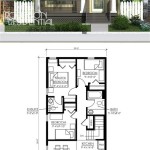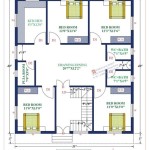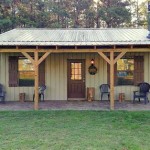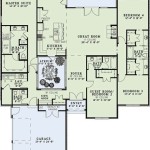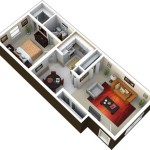A house plan program is a type of software application that allows users to design and create detailed plans for their homes. These programs typically provide a range of features and tools, such as drag-and-drop functionality, pre-designed templates, and the ability to import and export files, to help users quickly and easily create custom home designs. One example of a house plan program is Home Designer Pro, which is used by architects and homeowners alike to design and visualize their dream homes.
House plan programs can be a valuable tool for anyone planning to build or remodel their home. They can help users save time and money by providing a way to explore different design options and create realistic plans that can be used for construction. Additionally, house plan programs can help users make informed decisions about their home’s layout, size, and features.
In this article, we will explore the different features and benefits of house plan programs, and provide tips on how to choose the right program for your needs. We will also discuss the importance of working with a qualified architect or builder to ensure that your house plan is safe and meets all applicable building codes.
House plan programs offer a range of important features and benefits, including:
- Easy-to-use interface
- Drag-and-drop functionality
- Pre-designed templates
- Ability to import and export files
- Realistic 3D visualization
- Cost estimation tools
- Collaboration features
- Code compliance checking
- Integration with other software
These features can help users save time and money, make informed decisions about their home’s design, and ensure that their plans are safe and meet all applicable building codes.
Easy-to-use interface
One of the most important features of a house plan program is its user interface. A well-designed interface will be easy to navigate and use, even for beginners. It should provide users with quick access to all of the program’s features and tools, and it should make it easy to create and modify house plans.
There are a number of factors to consider when evaluating the ease of use of a house plan program. These include:
- The layout of the interface: The interface should be well-organized and logical, with all of the program’s features and tools arranged in a way that makes sense. The most important features should be easy to find and access, and there should be no unnecessary clutter or distractions.
- The use of icons and buttons: Icons and buttons should be clear and easy to understand, and they should be used consistently throughout the program. This will help users to quickly learn how to use the program and to find the features they need.
- The use of drag-and-drop functionality: Drag-and-drop functionality can make it easy to create and modify house plans. Users should be able to drag and drop walls, windows, doors, and other objects into place, and they should be able to easily resize and rotate objects.
- The use of templates: Templates can provide users with a starting point for their house plans. Users should be able to choose from a variety of templates, and they should be able to easily modify the templates to create their own custom designs.
- The use of help and documentation: The program should provide users with access to help and documentation, so that they can learn how to use the program and troubleshoot any problems they encounter.
A well-designed user interface can make a big difference in the ease of use of a house plan program. By choosing a program with an easy-to-use interface, users can save time and frustration, and they can focus on creating their dream home.
Drag-and-drop functionality
Drag-and-drop functionality is a feature that allows users to easily create and modify house plans by dragging and dropping walls, windows, doors, and other objects into place. This can save users a lot of time and effort, especially when compared to traditional methods of creating house plans, such as using pencil and paper or CAD software.
To use drag-and-drop functionality, users simply need to select an object from the program’s library and then drag it into place on the house plan. Objects can be resized and rotated to fit the user’s needs, and they can be easily moved around the plan to create different layouts.
Drag-and-drop functionality is not only easy to use, but it is also very versatile. It can be used to create a wide variety of house plans, from simple one-story homes to complex multi-story structures. Additionally, drag-and-drop functionality can be used to create both interior and exterior plans, so users can easily visualize the entire design of their home.
Overall, drag-and-drop functionality is a powerful tool that can help users save time and effort when creating house plans. It is easy to use, versatile, and can be used to create a wide variety of designs.
Pre-designed templates
Pre-designed templates are another valuable feature offered by many house plan programs. These templates provide users with a starting point for their house plans, and they can save users a lot of time and effort, especially when compared to starting from scratch.
- Variety of styles: Pre-designed templates are available in a wide variety of styles, including traditional, contemporary, modern, and more. This gives users a wide range of options to choose from, and it makes it easy to find a template that matches their desired style.
- Different sizes and layouts: Pre-designed templates are available in a variety of sizes and layouts, so users can find a template that fits their needs. Whether they are looking for a small one-story home or a large multi-story structure, they are sure to find a template that is a good fit.
- Easily customizable: Pre-designed templates are easily customizable, so users can make changes to fit their specific needs. They can add or remove rooms, change the size and shape of rooms, and move walls and windows around to create their own unique design.
- Time-saving: Using a pre-designed template can save users a lot of time. Instead of spending hours or even days creating a house plan from scratch, users can simply choose a template and make a few modifications to create a plan that is perfect for them.
Overall, pre-designed templates are a valuable feature that can save users time and effort when creating house plans. They provide users with a starting point for their plans, and they can be easily customized to create a unique design that meets their specific needs.
Ability to import and export files
The ability to import and export files is a critical feature for any house plan program. It allows users to easily share their plans with others, and it also allows them to use plans that they have created in other programs.
There are a number of different file formats that house plan programs can import and export. Some of the most common file formats include:
- DWG: DWG is a file format that is used by AutoCAD, a popular CAD software program. DWG files can be imported into house plan programs, and they can also be exported to AutoCAD for further editing.
- DXF: DXF is another file format that is used by AutoCAD. DXF files are similar to DWG files, but they are not as widely supported by house plan programs.
- PDF: PDF is a file format that is used to create portable documents. PDF files can be imported into house plan programs, but they cannot be edited. PDF files are useful for sharing house plans with others, as they can be viewed on any computer with a PDF reader.
- JPG: JPG is a file format that is used to create images. JPG files can be imported into house plan programs, but they cannot be edited. JPG files are useful for sharing house plans with others, as they can be easily viewed and shared online.
- PNG: PNG is a file format that is used to create images. PNG files are similar to JPG files, but they are lossless, which means that they do not lose any quality when they are compressed. PNG files are useful for sharing house plans with others, as they can be easily viewed and shared online.
The ability to import and export files is a valuable feature for any house plan program. It allows users to easily share their plans with others, and it also allows them to use plans that they have created in other programs. When choosing a house plan program, it is important to make sure that the program supports the file formats that you need.
In addition to the ability to import and export files, some house plan programs also offer the ability to import and export data. This data can include things like room dimensions, material lists, and cost estimates. Importing and exporting data can save users a lot of time and effort, as it eliminates the need to manually enter data into the program.
Overall, the ability to import and export files is a critical feature for any house plan program. It allows users to easily share their plans with others, and it also allows them to use plans that they have created in other programs. When choosing a house plan program, it is important to make sure that the program supports the file formats that you need.
Realistic 3D visualization
Realistic 3D visualization is a feature that allows users to create realistic 3D models of their house plans. This can be a valuable tool for visualizing the design of a home, and it can also be used to create marketing materials, such as brochures and website listings.
To create a 3D model, users simply need to import their house plan into the program and then use the program’s tools to create a 3D model of the home. The program will automatically generate a 3D model based on the plan, and users can then customize the model to add details, such as furniture, appliances, and landscaping.
Once a 3D model has been created, users can view the model from any angle and zoom in to see the details. They can also create walkthrough animations to see how the home will look and feel from the inside. This can be a valuable tool for making design decisions and for getting a better sense of the space.
Realistic 3D visualization is a powerful tool that can help users to visualize the design of their home and to make informed decisions about their design. It is a valuable feature for any house plan program, and it can help users to create beautiful and functional homes.
Here are some of the benefits of using realistic 3D visualization in a house plan program:
- Improved visualization: Realistic 3D visualization can help users to better visualize the design of their home. They can see how the home will look from all angles, and they can get a better sense of the space.
- Better decision-making: Realistic 3D visualization can help users to make better decisions about the design of their home. They can see how different design options will look, and they can make changes to the design before construction begins.
- More effective marketing: Realistic 3D visualization can be used to create marketing materials, such as brochures and website listings. This can help to attract potential buyers and to sell homes more quickly.
Overall, realistic 3D visualization is a valuable tool that can help users to visualize the design of their home and to make informed decisions about their design. It is a valuable feature for any house plan program, and it can help users to create beautiful and functional homes.
Cost estimation tools
Cost estimation tools are an important feature of many house plan programs. These tools allow users to estimate the cost of building their home, which can be helpful for budgeting and planning purposes.
- Material cost estimator: This tool allows users to estimate the cost of materials for their home, such as lumber, concrete, and roofing. Users simply need to enter the dimensions of their home and the materials they plan to use, and the tool will generate an estimate of the cost of materials.
- Labor cost estimator: This tool allows users to estimate the cost of labor for their home, such as framing, plumbing, and electrical work. Users simply need to enter the size of their home and the type of construction they plan to use, and the tool will generate an estimate of the cost of labor.
- Total cost estimator: This tool allows users to estimate the total cost of building their home, including the cost of materials and labor. Users simply need to enter the dimensions of their home, the materials they plan to use, and the type of construction they plan to use, and the tool will generate an estimate of the total cost of building their home.
- Customizable cost estimator: This tool allows users to customize the cost estimate to fit their specific needs. For example, users can adjust the cost of materials and labor based on their location and the availability of materials and labor in their area.
Cost estimation tools can be a valuable resource for users who are planning to build a home. These tools can help users to budget for their project and to make informed decisions about the design of their home.
Collaboration features
Collaboration features allow multiple users to work on the same house plan at the same time. This can be a valuable feature for teams of architects, engineers, and builders who are working on a project together.
There are a number of different collaboration features that house plan programs can offer. Some of the most common features include:
- Real-time editing: This feature allows multiple users to edit the same house plan at the same time. This can be a valuable feature for teams who are working on a tight deadline, as it allows them to make changes to the plan without having to wait for other team members to finish their work.
- Version control: This feature allows users to track changes to the house plan over time. This can be a valuable feature for teams who are working on a complex project, as it allows them to see who made changes to the plan and when the changes were made.
- Cloud storage: This feature allows users to store their house plans in the cloud, which makes it easy to share the plans with other team members and to access the plans from anywhere with an internet connection.
- Communication tools: Some house plan programs also offer communication tools, such as chat and video conferencing, which allow team members to communicate with each other while they are working on the plan.
Collaboration features can be a valuable asset for teams who are working on house plans. These features can help teams to work more efficiently and to create better designs.
Here are some of the benefits of using collaboration features in a house plan program:
- Improved efficiency: Collaboration features can help teams to work more efficiently by allowing multiple users to work on the same plan at the same time. This can reduce the time it takes to complete a project.
- Better communication: Collaboration features can help teams to communicate more effectively by providing them with tools to chat and video conference with each other. This can help to reduce misunderstandings and to ensure that everyone is on the same page.
- Improved design quality: Collaboration features can help teams to create better designs by allowing them to share ideas and to get feedback from other team members. This can help to ensure that the final design is the best possible design.
Overall, collaboration features can be a valuable asset for teams who are working on house plans. These features can help teams to work more efficiently, to communicate more effectively, and to create better designs.
Code compliance checking
Code compliance checking is a feature that helps users to ensure that their house plans meet all applicable building codes. Building codes are regulations that govern the design and construction of buildings, and they are in place to ensure that buildings are safe and habitable. Code compliance checking can help users to avoid costly mistakes and delays during the construction process.
- Automatic code checking: This feature automatically checks house plans for compliance with building codes. The program will identify any potential code violations and provide users with suggestions for how to correct the violations.
- Real-time feedback: This feature provides users with real-time feedback on the code compliance of their house plans. As users make changes to the plan, the program will automatically check for code compliance and provide feedback. This can help users to identify and correct code violations early in the design process.
- Comprehensive code database: This feature provides users with access to a comprehensive database of building codes. The database includes codes from all 50 states and the District of Columbia. This ensures that users have access to the most up-to-date and accurate code information.
- Customizable code settings: This feature allows users to customize the code settings to match their specific project requirements. For example, users can select the specific building code that they need to comply with and can also specify the level of detail that they want the code checking to perform.
Code compliance checking is a valuable feature for any house plan program. It can help users to ensure that their house plans meet all applicable building codes, which can save time and money during the construction process. When choosing a house plan program, it is important to make sure that the program offers code compliance checking features that meet your specific needs.
Integration with other software
Integration with other software is an important feature of many house plan programs. This allows users to connect their house plan program with other software programs that they use, such as CAD software, 3D modeling software, and cost estimating software. This can streamline the design process and make it easier to create accurate and complete house plans.
- CAD software: CAD (computer-aided design) software is used to create 2D and 3D drawings of buildings. House plan programs that integrate with CAD software allow users to import and export CAD drawings, which can save time and effort. This can be especially useful for users who are creating complex house plans that require detailed drawings.
- 3D modeling software: 3D modeling software is used to create 3D models of buildings. House plan programs that integrate with 3D modeling software allow users to import and export 3D models, which can be useful for visualizing the design of a home and for creating marketing materials, such as brochures and website listings.
- Cost estimating software: Cost estimating software is used to estimate the cost of building a home. House plan programs that integrate with cost estimating software allow users to import their house plans into the cost estimating software and to generate a cost estimate for their project. This can help users to budget for their project and to make informed decisions about the design of their home.
- Other software: House plan programs can also integrate with other software programs, such as project management software, document management software, and collaboration software. This can help users to manage their projects more effectively and to collaborate with other team members.
Integration with other software is a valuable feature for any house plan program. It allows users to connect their house plan program with other software programs that they use, which can streamline the design process and make it easier to create accurate and complete house plans.









Related Posts

